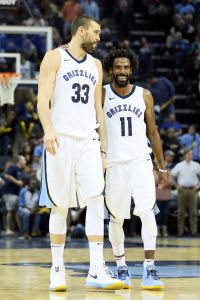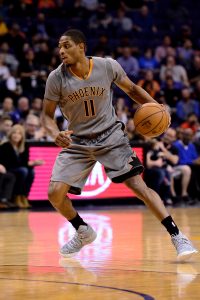Players eligible for restricted free agency don’t become restricted free agents by default. In order to make a player a restricted free agent, a team must extend a qualifying offer to him — a player who doesn’t receive one becomes an unrestricted free agent instead.
The qualifying offer, which is essentially just a one-year contract offer, varies in amount depending on a player’s service time and previous contract status.
If a player reaches free agency with three or fewer years of NBA service time under his belt, his qualifying offer is worth 125% of his prior salary, or his minimum salary plus $200K, whichever is greater. For instance, after earning $1,312,611 this season, Fred VanVleet will be eligible for a qualifying offer worth $1,699,698 this offseason — that’s calculated by adding $200,000 to his minimum salary for 2018/19 ($1,499,698). Malcolm Delaney‘s 2017/18 salary, meanwhile, was $2,500,000, so his qualifying offer will be worth 125% of that figure: $3,125,000.
The qualifying offer for a former first-round pick coming off his rookie scale contract is determined by his draft position. The qualifying offer for a first overall pick is 130% of his fourth-year salary, while for a 30th overall pick it’s 150% of his previous salary — QOs for the rest of the first-rounders fall somewhere in between. The full first-round scale for the draft class of 2014, whose first-rounders will be hitting free agency this summer, can be found here, courtesy of RealGM.
Here are a pair of examples for this offseason, based on RealGM’s chart: 2014’s fourth overall pick Aaron Gordon, coming off a fourth-year salary of $5,504,420, must be extended a qualifying offer of $7,260,330 (a 31.9% increase) to become a restricted free agent. 23rd overall pick Rodney Hood will be eligible for a qualifying offer of $3,472,887, a 45.5% increase on this season’s $2,386,864 salary.
A wrinkle in the Collective Bargaining Agreement complicates matters for certain RFAs-to-be, since a player’s previous usage can impact the amount of his qualifying offer. The CBA identifies the “starter criteria” as starting 41 games or playing 2,000 minutes per season, and rewards players for meeting those criteria. A player meets the starter criteria if he compiles at least 41 starts or 2,000 minutes in the season prior to his free agency, or averages at least that many starts or minutes over the two seasons before he becomes a free agent. Here’s how the starter criteria affects qualifying offers:
- A top-14 pick who does not meet the starter criteria will receive a same qualifying offer equal to 120% of the amount applicable to the 15th overall pick.
- A player picked between 10th and 30th who meets the starter criteria will receive a qualifying offer equal to 120% of the amount applicable to the ninth overall pick.
- A second-round pick or undrafted player who meets the criteria will receive a qualifying offer equal to 100% of the amount applicable to the 21st overall pick.
You can find examples of free-agents-to-be to whom these conditions apply right here.
A qualifying offer is designed to give a player’s team the right of first refusal. Because the qualifying offer acts as the first formal contract offer a free agent receives, his team then receives the option to match any offer sheet the player signs with another club.
A player can also accept his qualifying offer, if he so chooses. He then plays the following season on a one-year contract worth the amount of the QO, and becomes an unrestricted free agent at season’s end. A player can go this route if he wants to hit unrestricted free agency as early as possible, or if he feels like the QO is the best offer he’ll receive. Accepting the qualifying offer also gives a player the right to veto trades for the season.
During the 2017 offseason, for instance, Nerlens Noel and Alex Len signed their respective qualifying offers. Their teams likely would’ve been willing to negotiate longer-term deals (Noel reportedly turned down a lucrative four-year offer at the start of free agency), but neither player had a ton of leverage. Noel and Len ultimately felt it would be in their best interest to accept that one-year qualifying offer and reach unrestricted free agency in the summer of 2019.
Finally, while the details outlined above apply to players on standard NBA contracts who are eligible for restricted free agency, a different set of rules applies to players coming off two-way contracts. For most of those players, the qualifying offer would be equivalent to a one-year, two-way salary, with $50K guaranteed.
If a player coming off a two-way contract is ineligible to sign another one – either because he has already been on two-way deals with his current team for two seasons or because he has three years of NBA service – his qualifying offer would be a standard, minimum-salary NBA contract. The guarantee on that QO would have to match or exceed what a two-way player would earn in the G League. Timberwolves two-way player Anthony Brown is one example of a player who would be eligible for this form of qualifying offer this summer.
Note: This is a Hoops Rumors Glossary entry. Our glossary posts will explain specific rules relating to trades, free agency, or other aspects of the NBA’s Collective Bargaining Agreement. Larry Coon’s Salary Cap FAQ was used in the creation of this post.
Earlier versions of this post were published in 2012 and 2013.

